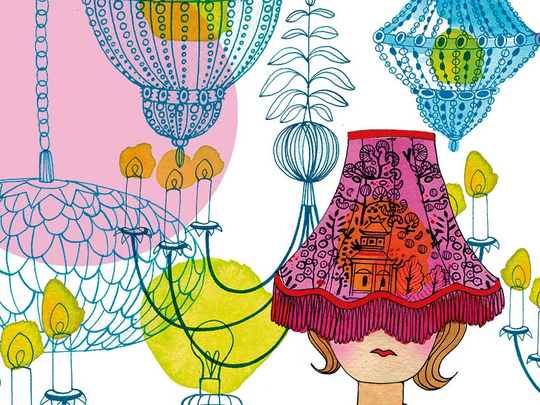
New York: I decided this year to replace my bathroom vanity lights, a pair of decades-old fluorescent sconces that gave off a shrill hum almost as irritating as their bluish hue. With lights like these, there was nowhere to go but up.
I had never bought sconces before, yet I figured this quest would be simple, if only because the bar was set so low. Then I went online. I started with Wayfair, the online home decor company with a vast inventory, including some 13,000 vanity lights. If you’ve ever spent time buying home furnishings online, you probably already know where this adventure will lead: to many more websites, passionate customer reviews and eventually heart palpitations.
Online home decorating is an experience that can wax on for hours or even months, as you ponder countless thumbnail images of whatever you’re shopping for, pinning your favourites onto your Pinterest board, which quickly becomes a mosaic of fantasy rooms. You may find yourself visiting this virtual destination with a mix of angst and intense house envy, knowing that whatever item you ultimately buy will never make your house resemble any of these impeccable alternatives.
“You’re seeing these online curated spaces, and you’re like, ‘That bookshelf is what I need to turn my living room into something catalogue worthy,’” said Molly Erdman, the author of “Catalog Living at Its Most Absurd”. “And then you get it, and it’s like, ‘Nope, it’s still my living room.’”
As online shopping eclipses bricks-and-mortar, Americans are getting used to the idea that we can buy lamps, sofas and area rugs from our iPhones, too. While we’re still more likely to buy an Xbox online than an end table, home furnishings make up a sizeable portion of our digital purchases, with $35 billion (Dh128 billion) in sales in 2014, according to Statista. In 2017, home furnishings accounted for 12 per cent of our online purchases, a figure that Statista predicts will grow to 13.9 per cent by 2022.
For a company like Wayfair, our increasing willingness to buy a bed without ever testing it out has translated to traffic. In 2017, the company had 11 million active customers, up 33 per cent from 2016. Sales grew by 40 per cent in 2017, to $4.7 billion.
But buying a coffee table online is not the same experience as buying a blouse. If the blouse doesn’t fit or the turquoise is really more of a teal, you can leave it on the kitchen counter until you get around to shipping it back. If the dining table doesn’t fit, though, you might not be able to get it through the front door.
Returning that large object is a complicated (and sometimes costly) proposition. How do you even repackage a table? Assuming you get it through the door, you may just have to live with it or sell it to someone else on a site like Craigslist, the place where our shopping mistakes go to die. As I sat at my computer, sifting through images of sconces, I filtered the vast collection by style, an option that sent me hurtling toward an identity crisis.
Was my style “industrial” or “glam?” Or maybe it was “coastal” or “global inspired”, two categories that made me wonder why a sconce can’t be both coastal and globally inspired. What if I was none of these categories? What if the light fixture waiting for me at the end of this search really belonged in the rather bland “traditional” category that I had just filtered out? “There are too many choices. Where do you start?” said Jill Vegas, the author of “Speed Decorating”. Scour the web long enough and “it can just spiral into questions about yourself. Is this the life I want to be living? Is this what I value?”
Bricks-and-mortar shopping is no breeze, either. Dizzy from my digital quest for the perfect sconce (does such a thing even exist?), I decided to drive to a lighting store and see one in real life.
So on a raw Saturday in March, I dragged the kids to Capitol Lighting, a glittering showroom in northern New Jersey displaying every kind of light imaginable. My 7-year-old daughter immediately fell in love with a $35,000 disco ball-style chandelier, as I lost myself in a wall covered in more affordable fixtures.
The patient and attentive sales clerk praised the merits of a handsome one in a patina neither quite brass nor chrome for $185. The longer I stared at the gleaming display, in a room reminiscent of the Vegas strip, the more I wondered about the options back at home, waiting for me on my computer screen.
The sensory overload I experienced online paled in comparison to what I was experiencing in these half a dozen rooms bathed in light bulbs. My daughter insisted we buy the disco ball just as my 10-year-old son began to ominously reach for a crystal dangling from a $15,000 fixture. We left.
That night, back at my computer, I considered my options and, after double checking the measurements, settled on a pair of angular sconces that looked like they would give off plenty of light. They cost around $100 each.
The set arrived a few days later. I’ll never know for sure if I missed out on a more perfect pair, or if these really match my true style, but they are certainly an improvement over the ancient flickering fluorescents that they replaced.












